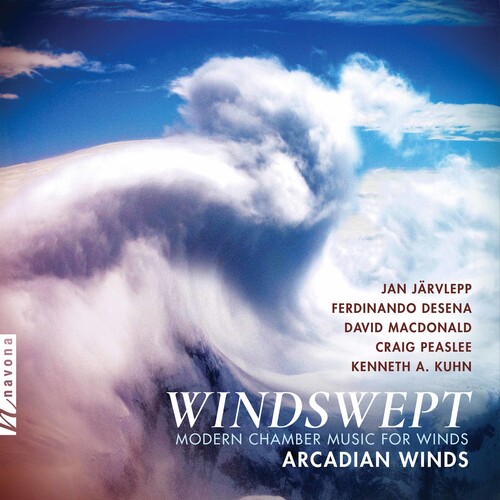Show results for
Deals
- 4K Ultra HD Sale
- Action Sale
- Alternative Rock Sale
- Anime sale
- Award Winners Sale
- Bear Family Sale
- Blu ray Sale
- Blues on Sale
- British Sale
- Classical Music Sale
- Comedy Music Sale
- Comedy Sale
- Country Sale
- Criterion Sale
- Cult Films sale
- Documentaries Sale
- Drama Sale
- Electronic Music sale
- Horror Sci fi Sale
- Kids and Family Sale
- Metal Sale
- Music Video Sale
- Musicals on Sale
- Mystery Sale
- Naxos Label Sale
- Page to Screen Sale
- Paramount Sale
- Rap and Hip Hop Sale
- Reggae Sale
- Rock
- Rock and Pop Sale
- Rock Legends
- Soul Music Sale
- TV Sale
- Vinyl on Sale
- War Films and Westerns on Sale

Windswept
- Format: CD
- Release Date: 8/23/2019

Windswept
- Format: CD
- Release Date: 8/23/2019
- Label: Navona
- UPC: 896931005456
- Item #: 2192945X
- Genre: Classical
- Release Date: 8/23/2019

Product Notes
Throughout WINDSWEPT, the Boston-based Arcadian Winds project a storytelling experience that is joyful, moving, and meaningful to hear. The three-movement Woodwind Quintet by Canadian composer Jan Järvlepp starts off WINDSWEPt. The first movement, "Rollercoaster," invokes a childlike whimsy with a noticeable pop influence. This is followed by "Solitude," a more mature and romantic movement of music. Woodwind Quintet concludes with "Pyrotechnics," a piece rooted in texture. Sonorous Earth, written by Miami composer Ferdinando DeSena, offers a down-to-earth, stable tone. While offering no less lyricism in his compositions, DeSena's storytelling is built from his ability to interweave these instruments in the lower tonal register. Stumpery, the third piece, is also based on this very concept of interwoven melodies. Composed by David MacDonald, the inspiration behind the piece is the complex network of a stumpery, or a type of garden in which the roots of trees tangle around one another. While the roots are represented by the linear melodies of the instruments, MacDonald establishes a unique ambient sound incorporating reverberations of the instruments, emphasizing the space left by the tendrils of the roots. Dirge & Second Line by Craig Peaslee experiments with the dictation of the New Orleans jazz style. Using a classical chamber ensemble, he juxtaposes some of the intricacies of classical notation with the loose, laid-back energies of the jazz music he works with. Concluding the album, Kenneth Kuhn's Variations on a Commoner Theme, No. 1 builds a musical story of the quest of a theme in the lowest class of musical hierarchy seeking to become noble. The wind quintet chronicles the various attempts via varying personalities of tempo, key change, and tone. The mood and melody start from the lowest class, build themselves up with grandiose ambitions, and after a fall into despair, level out in the final measures in a noble atmosphere of bright, optimistic acceptance.

